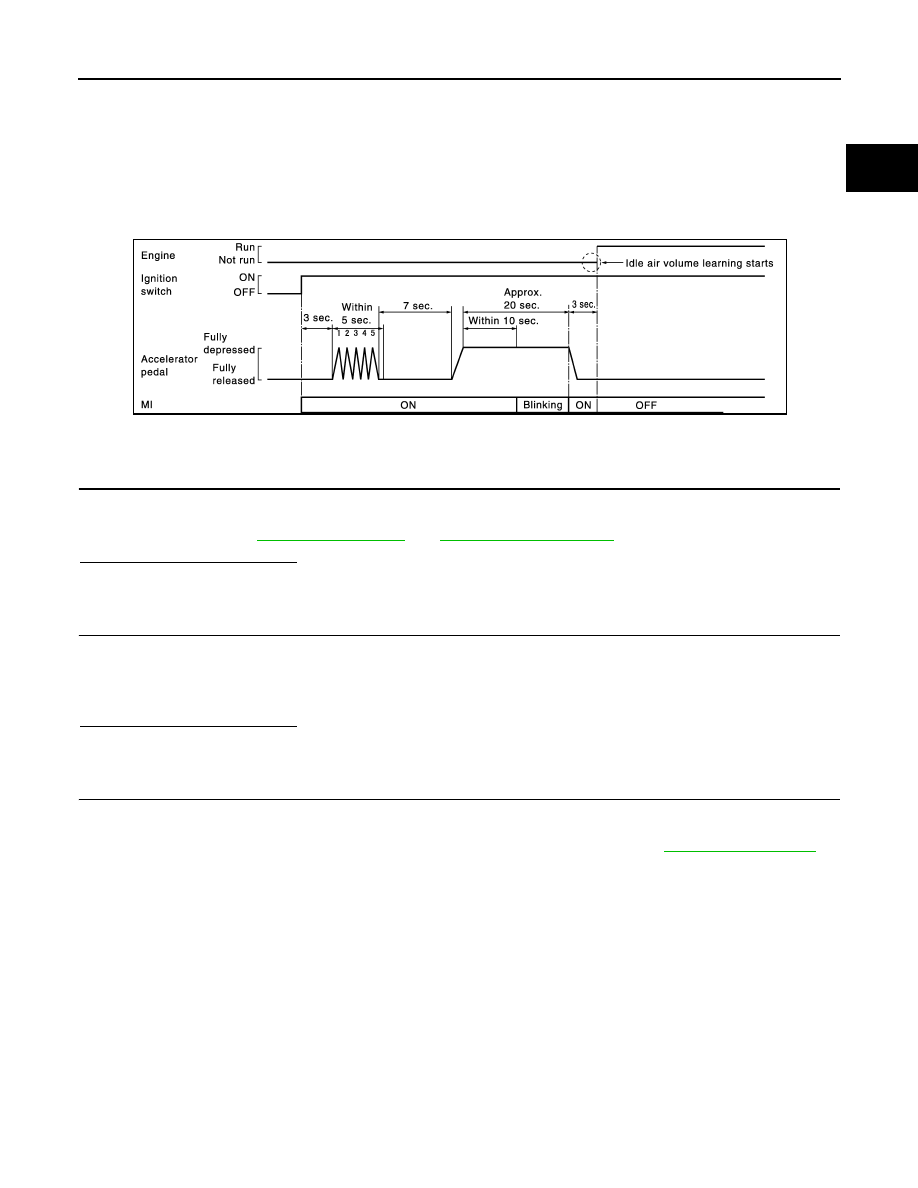Nissan Versa Sedan. Instruction - part 282

IDLE AIR VOLUME LEARNING
EC-127
< BASIC INSPECTION >
[HR16DE]
C
D
E
F
G
H
I
J
K
L
M
A
EC
N
P
O
5. Confirm that accelerator pedal is fully released, turn ignition switch ON and wait 3 seconds.
6. Repeat the following procedure quickly five times within 5 seconds.
-
Fully depress the accelerator pedal.
-
Fully release the accelerator pedal.
7. Wait 7 seconds, fully depress the accelerator pedal and keep it for approx. 20 seconds until the MIL stops
blinking and turned ON.
8. Fully release the accelerator pedal within 3 seconds after the MIL turned ON.
9. Start engine and let it idle.
10. Wait 20 seconds.
>> GO TO 4.
4.
CHECK IDLE SPEED AND IGNITION TIMING
Rev up the engine two or three times and make sure that idle speed and ignition timing are within the specifi-
cations.
.
Is the inspection result normal?
YES
>> INSPECTION END
NO
>> GO TO 5.
5.
DETECT MALFUNCTIONING PART
Check the following
• Check that throttle valve is fully closed.
• Check PCV valve operation.
• Check that downstream of throttle valve is free from air leakage.
Is the inspection result normal?
YES
>> GO TO 6.
NO
>> Repair or replace malfunctioning part.
6.
DETECT MALFUNCTIONING PART
Engine component parts and their installation condition are questionable. Check and eliminate the cause of
the incident.
It is useful to perform “TROUBLE DIAGNOSIS - SPECIFICATION VALUE”. Refer to
If any of the following conditions occur after the engine has started, eliminate the cause of the incident and
perform Idle Air Volume Learning all over again:
• Engine stalls.
• Erroneous idle.
>> INSPECTION END
PBIB0665E